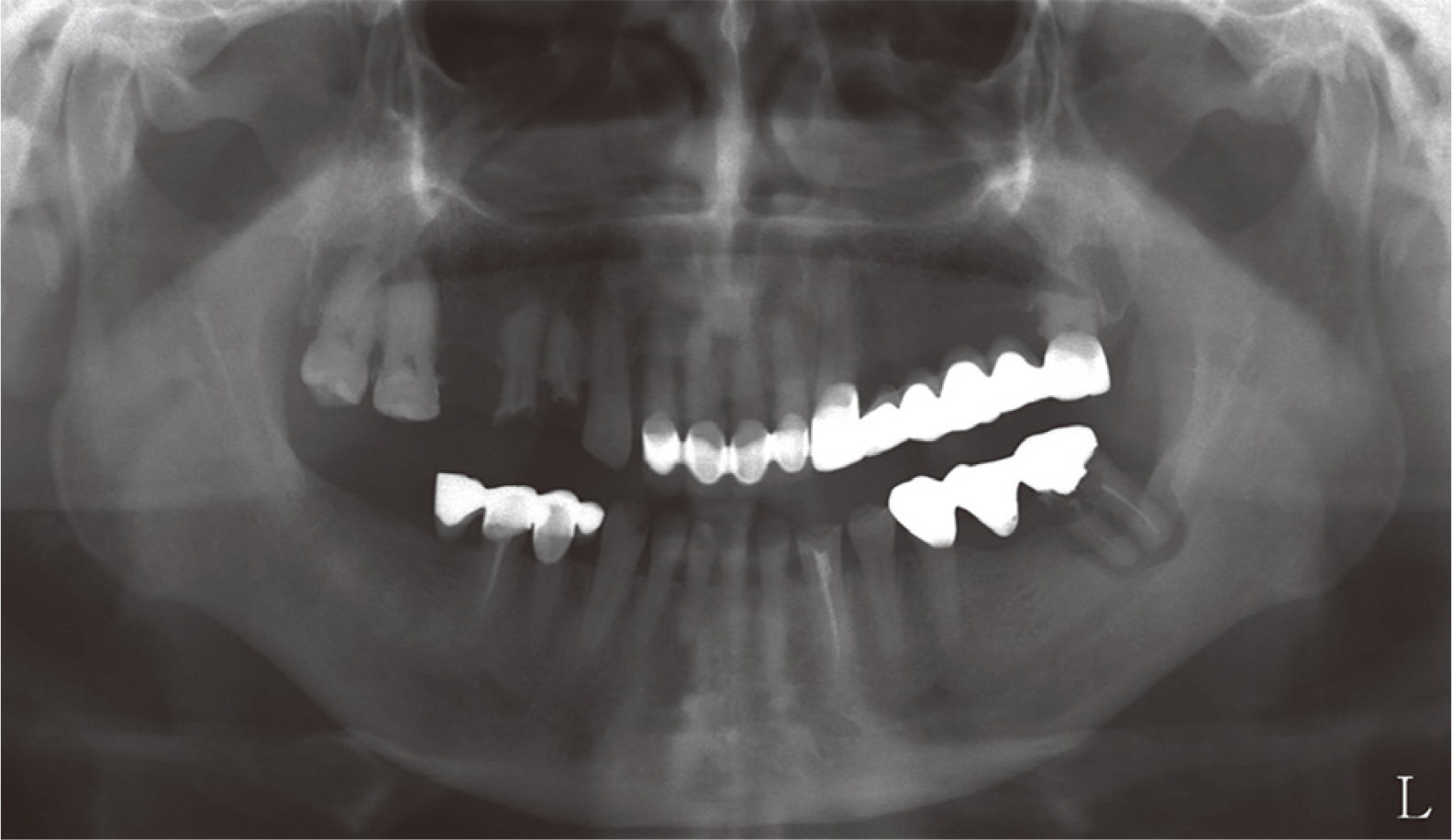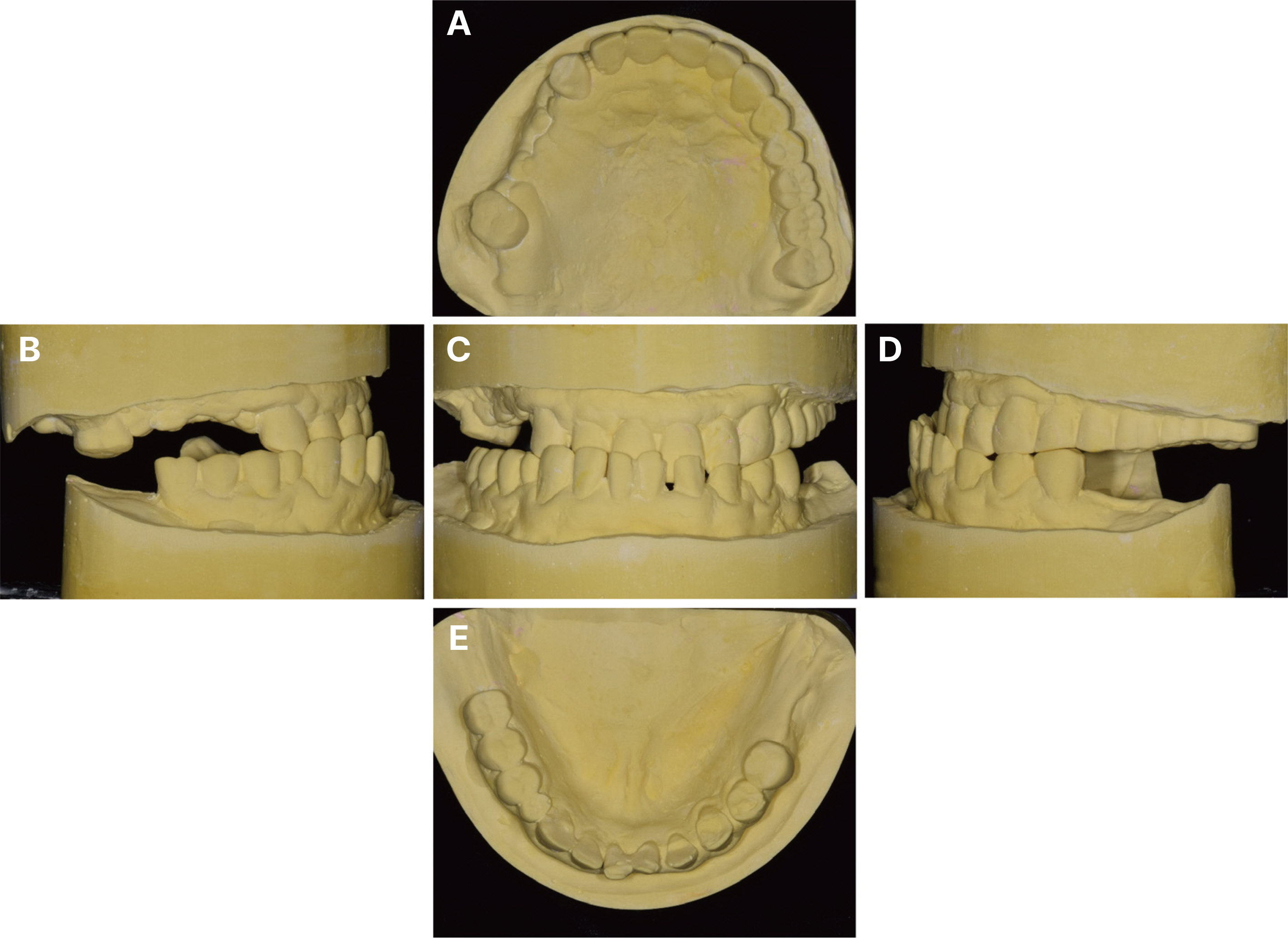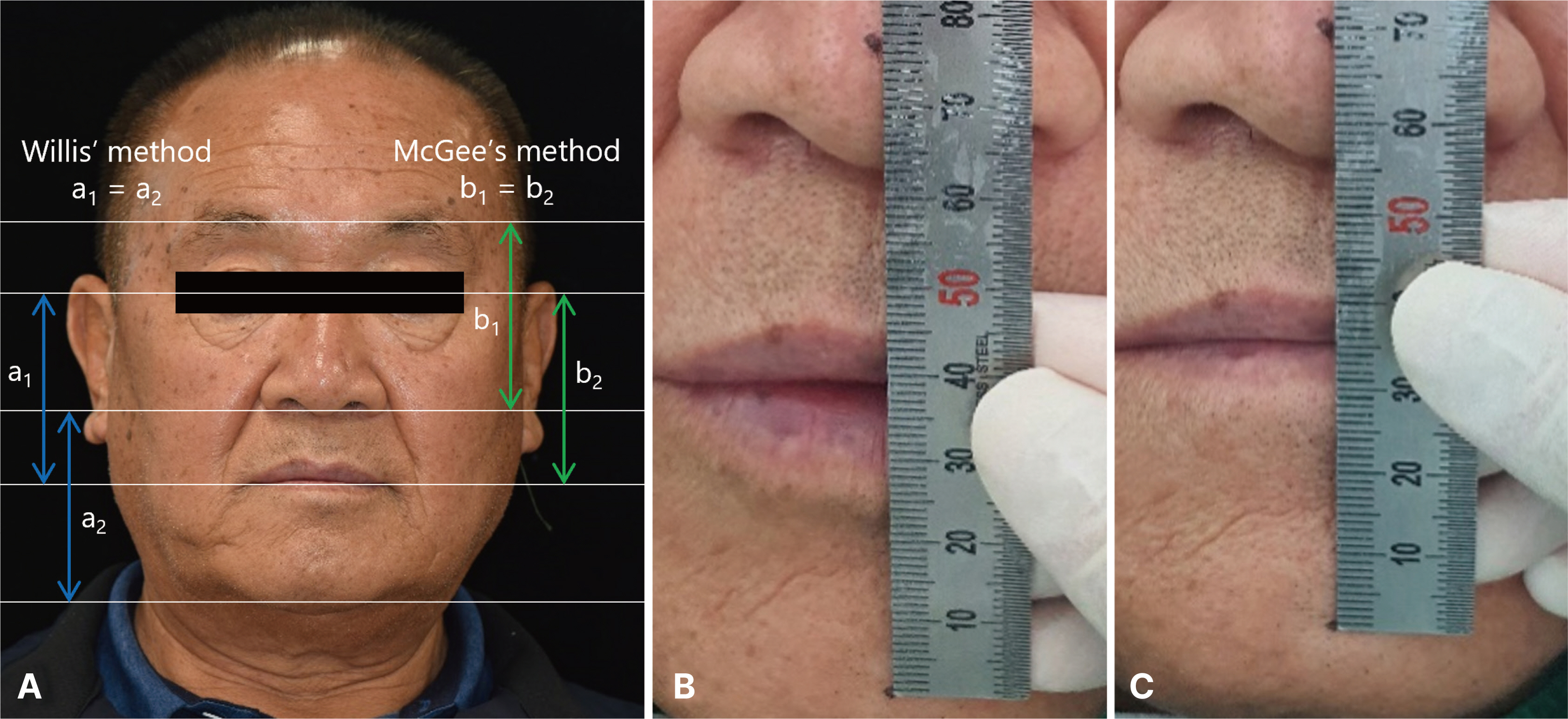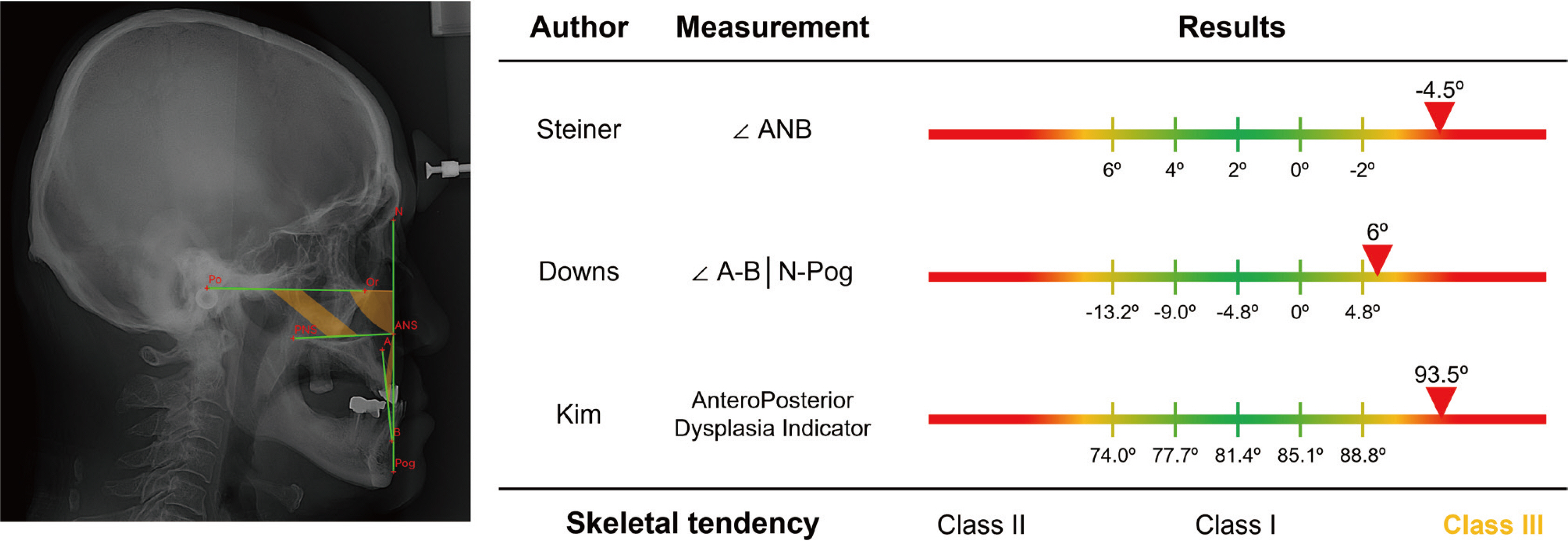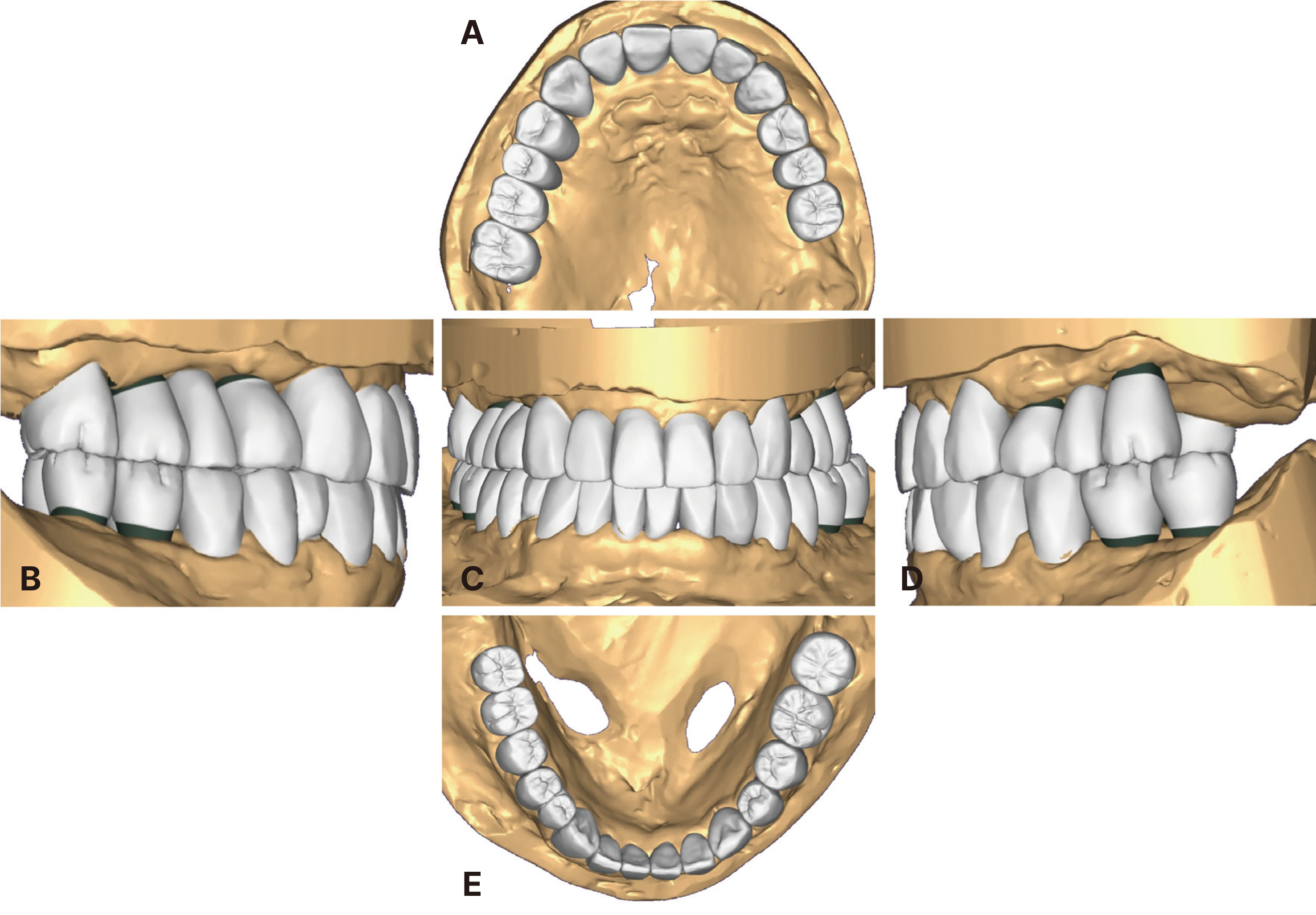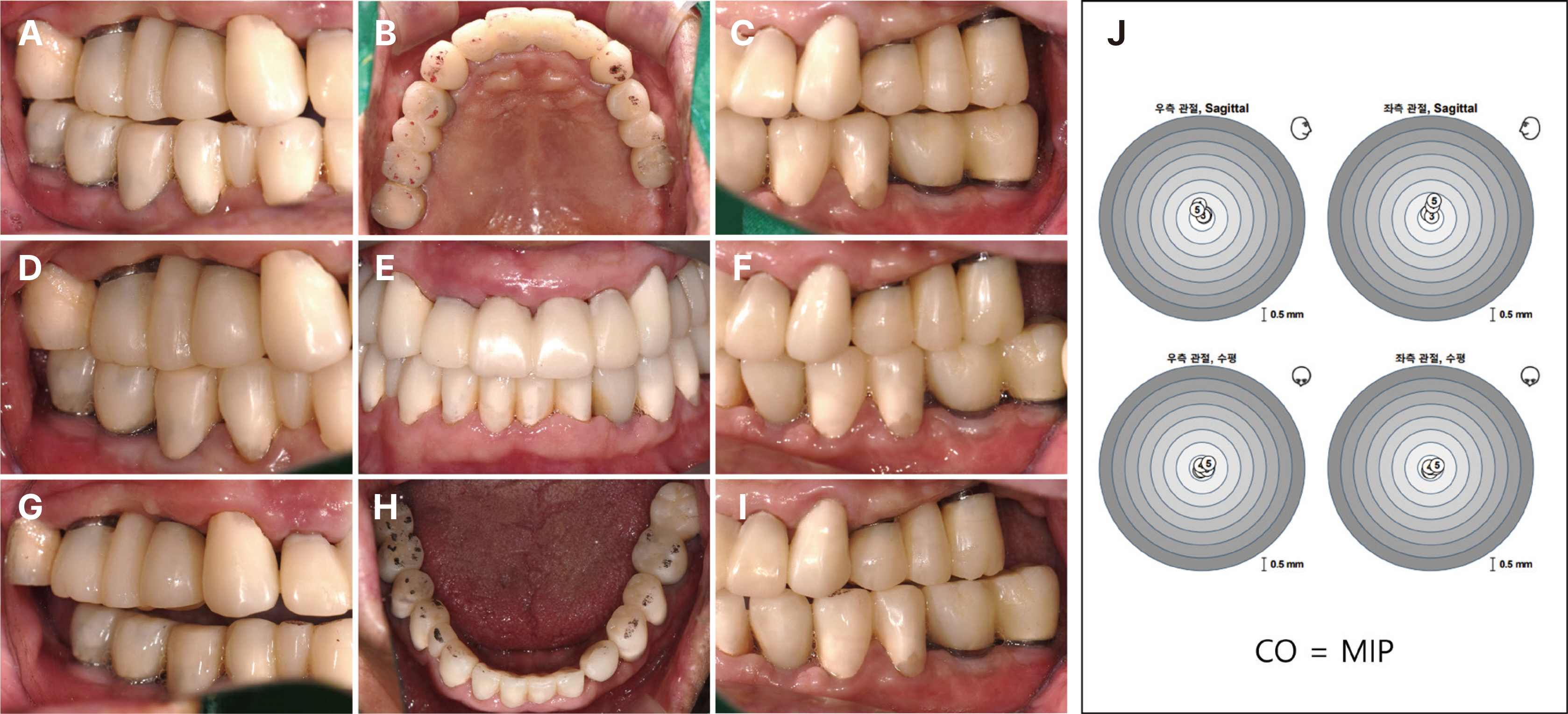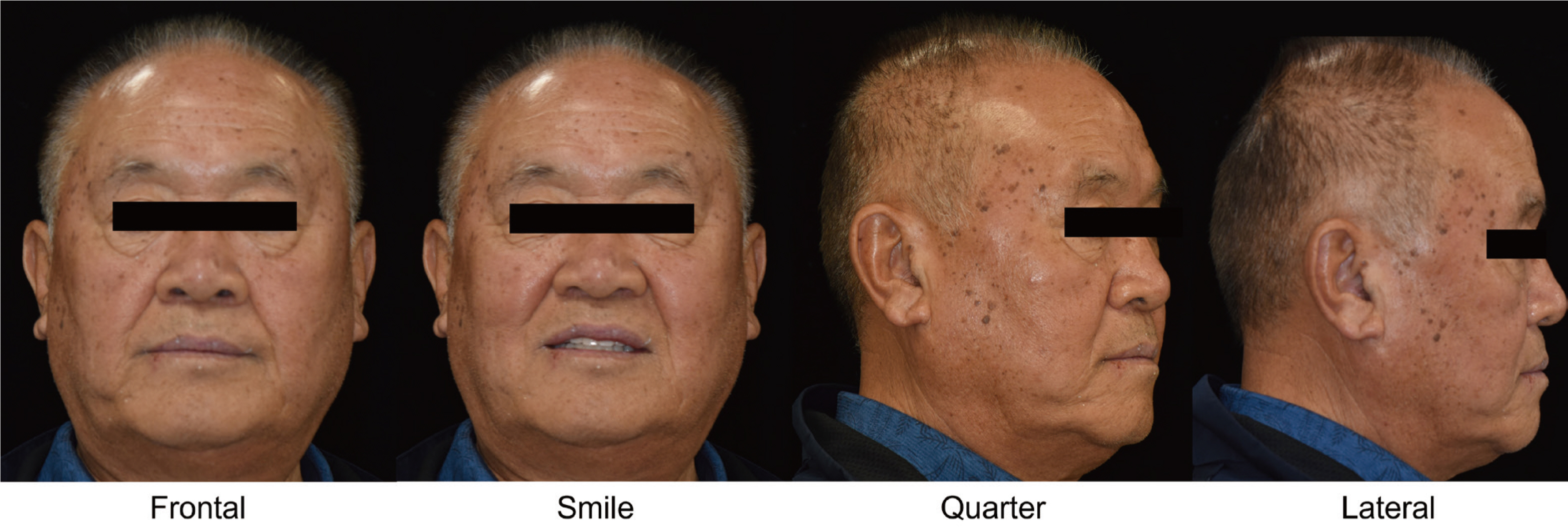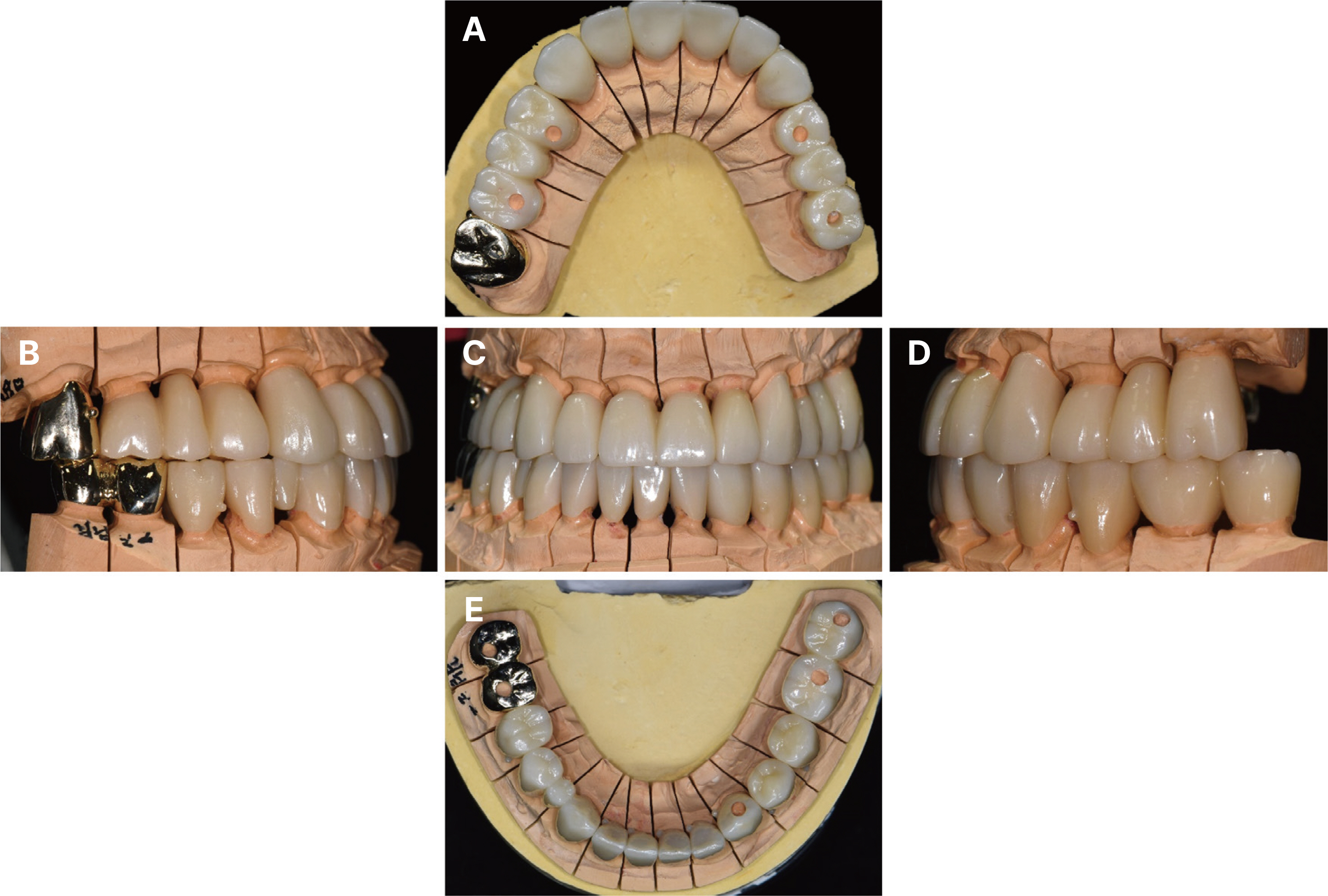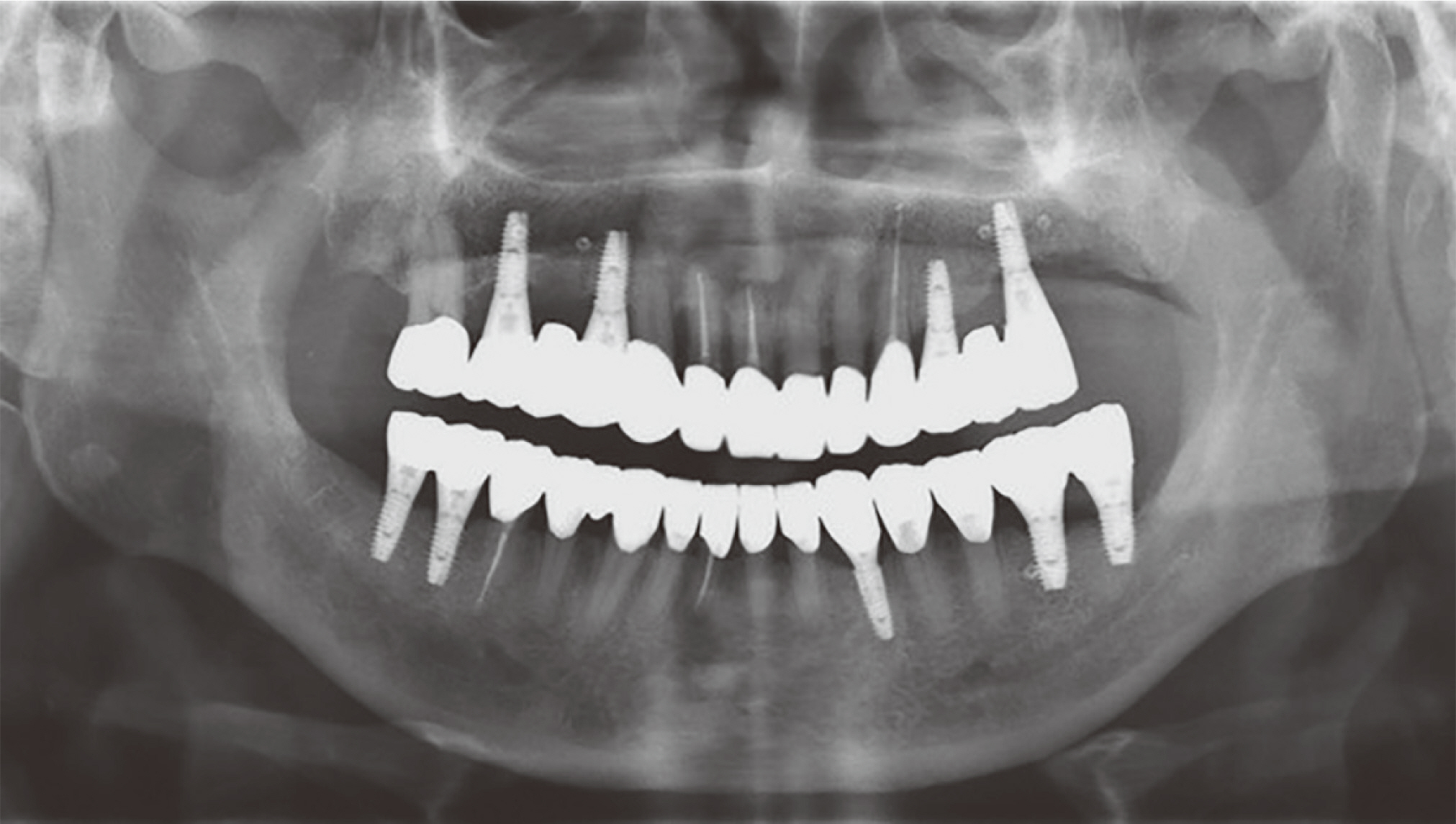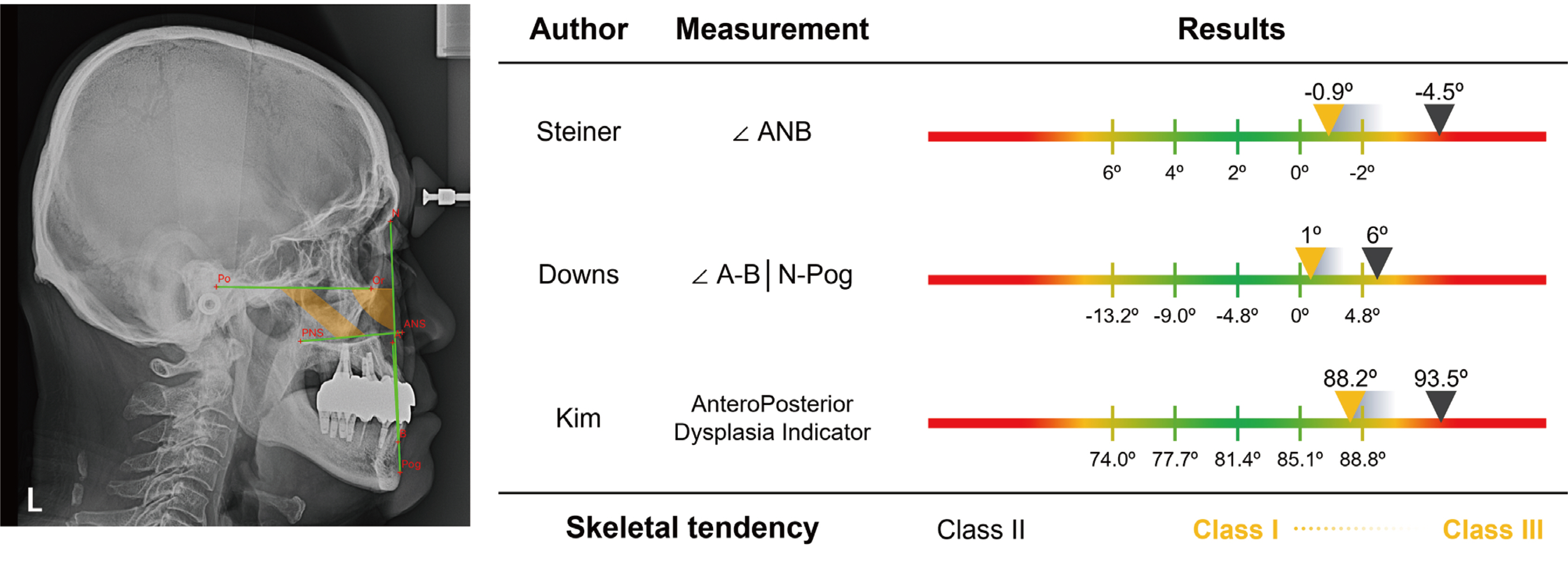J Dent Rehabil Appl Sci.
2023 Sep;39(3):133-145. 10.14368/jdras.2023.39.3.133.
Prosthetic rehabilitation in a Class III malocclusion patient with increasing occlusal vertical dimension
- Affiliations
-
- 1Department of Prosthodontics and Research Institute of Oral Science, College of Dentistry, Gangneung-Wonju National University, Gangneung, Republic of Korea
- KMID: 2549280
- DOI: http://doi.org/10.14368/jdras.2023.39.3.133
Abstract
- Class III malocclusion with mandibular protrusion can be divided into skeletal and pseudo malocclusion due to tooth displacement. For skeletal malocclusion, favorable treatment results can be obtained by establishing an appropriate vertical and horizontal intermaxillary relationship in order to secure a restoration space and obtain aesthetic and functional results. In this case, complete mouth rehabilitation was performed using an implant and a fixed prosthesis in a patient with mandibular protrusion and anterior teeth wear and reduced occlusal vertical dimension. After cast analysis and digital diagnosis, a provisional restoration with increased vertical dimension was fabricated to secure posterior support and evaluate stable centric occlusion. With the definitive prosthesis reflecting the provisional restoration, favorable function and aesthetics were obtained.
Keyword
Figure
Reference
-
References
1. Dawson PE. 2007. Functional occlusion: from TMJ to smile design. 1st ed. Mosby;St. Louis: p. 429–52. p. 595–602. DOI: 10.4103/0972-4052.32520.2. Lee KY, Kim CY, Jung JH, Kim YL. 2015; Mouth rehabilitation of a patient with severely worn dentition with vertical dimension increase. J Korean Acad Prosthodont. 53:215–21. DOI: 10.4047/jkap.2015.53.3.215.3. Yun AY, Shim HW, An JH. 2014; Full mouth rehabilitation in a patient with loss of vertical dimension caused by severe tooth loss: a case report. J Korean Acad Prosthodont. 52:42–7. DOI: 10.4047/jkap.2014.52.1.42.4. Eichner K. 1990; Renewed examination of the group classification of partially edentulous arches by Eichner and application advices for studies on morbidity statistics. Stomatol DDR. 40:321–5. DOI: 10.1007/978-3-663-13215-8_4.5. Willis FM. 1935; Features of the face involved in full denture prosthesis. Dent Cosmos. 77:851–4.6. Turner KA, Missirlian DM. 1984; Restoration of the extremely worn dentition. J Prosthet Dent. 52:467–74. DOI: 10.1016/0022-3913(84)90326-3. PMID: 6389829.7. Inui M, Fushima K, Sato S. 1999; Facial asymmetry in temporomandibular joint disorders. J Oral Rehabil. 26:402–6. DOI: 10.1046/j.1365-2842.1999.00387.x. PMID: 10373087.8. Ahn SJ, Lee SP, Nahm DS. 2005; Relationship between temporomandibular joint internal derangement and facial asymmetry in women. Am J Orthod Dentofacial Orthop. 128:583–91. DOI: 10.1016/j.ajodo.2004.06.038. PMID: 16286205.9. Zhang YL, Song JL, Xu XC, Zheng LL, Wang QY, Fan YB, Liu Z. 2016; Morphologic Analysis of the Temporomandibular Joint Between Patients With Facial Asymmetry and Asymptomatic Subjects by 2D and 3D Evaluation: A Preliminary Study. Medicine (Baltimore). 95:e3052. DOI: 10.1097/MD.0000000000003052. PMID: 27043669. PMCID: PMC4998530.10. Murphy T. 1958; Mandibular adjustment to functional tooth attrition. Aust Dent J. 3:171–8. DOI: 10.1111/j.1834-7819.1958.tb01832.x.11. Dawson PE. 2007. Functional occlusion: from TMJ to smile design. 1st ed. Mosby;St. Louis: p. 513–24. DOI: 10.4103/0972-4052.32520.12. Dawson PE. 1989. Evaluation, diagnosis, and treatment of occlusal problems. 2nd ed. Mosby;St. Louis:13. Pleasure MA. 1951; Correct vertical dimension and freeway space. J Am Dent Assoc. 43:160–3. DOI: 10.14219/jada.archive.1951.0188. PMID: 14850211.14. Shanahan TE. 2004; Physiologic vertical dimension and centric relation. 1956. J Prosthet Dent. 91:206–9. DOI: 10.1016/j.prosdent.2003.09.002. PMID: 15060486.15. Silverman MM. 2001; The speaking method in measuring vertical dimension. 1952. J Prosthet Dent. 85:427–31. DOI: 10.1067/mpr.2001.116139. PMID: 11357066.16. Abduo J, Lyons K. 2012; Clinical considerations for increasing occlusal vertical dimension: a review. Aust Dent J. 57:2–10. DOI: 10.1111/j.1834-7819.2011.01640.x. PMID: 22369551.17. Millstein P. 2008; Know your indicator. J Mass Dent Soc. 56:30–1.
- Full Text Links
- Actions
-
Cited
- CITED
-
- Close
- Share
- Similar articles
-
- The evaluation of maximum bite force in the occlusal rehabilitation of patient with Angle Class III malocclusion: a case report
- Rehabilitation of posterior support and vertical dimension in a class 3 malocclusion patient: A case report
- Evaluation methods of occlusal vertical dimension and their clinical applications: A narrative review
- Prosthetic full mouth rehabilitation of patient with mandibular prognathism and asymmetry: a case report
- A study on the vertical dysplasia in the skeletal class iii malocclusion

